
We left
the Palace at Estoi and headed west on the A22 motorway.
The point at Sagres is referred to as "the start of Europe" and
one look at a map will tell you that is true. Sagres is
the most western point of the Iberian Peninsula and is at the
southwest corner of the country. Worth a few hours of your
time, it was a checkbox on our list of places to visit.
When we finished at Sagres, we headed north to San Antonio, near
Sines, as a stop-over prior to our arrival in Lisbon.
The photos below are what we saw.

There
were a ton of folks at the fort. Turns out, due to its
physical location Sagres is on everyone's checklist. The
fort itself was actually quite plain. There was a large
queue for tickets inside the entrance portal.


Simple,
but imposing walls that extended to the steep cliffs.

The
royal crest above the portal had suffered from the weather over
the years; it was not legible.


The wind
was blowing at least 30 mph with substantially higher
gusts. I spotted this attractive gal taking a
selfie. Then again in about 20 feet. And again and
again. Apparently, she was not interested in the fort, but
rather taking photos of herself in various locations within the
fort. Kids these days!

The
point at Sagres is composed of limestone beds. Limestone
weathers to produce interesting patterns (and caves). This
field of boulders was enclosed within the fort.
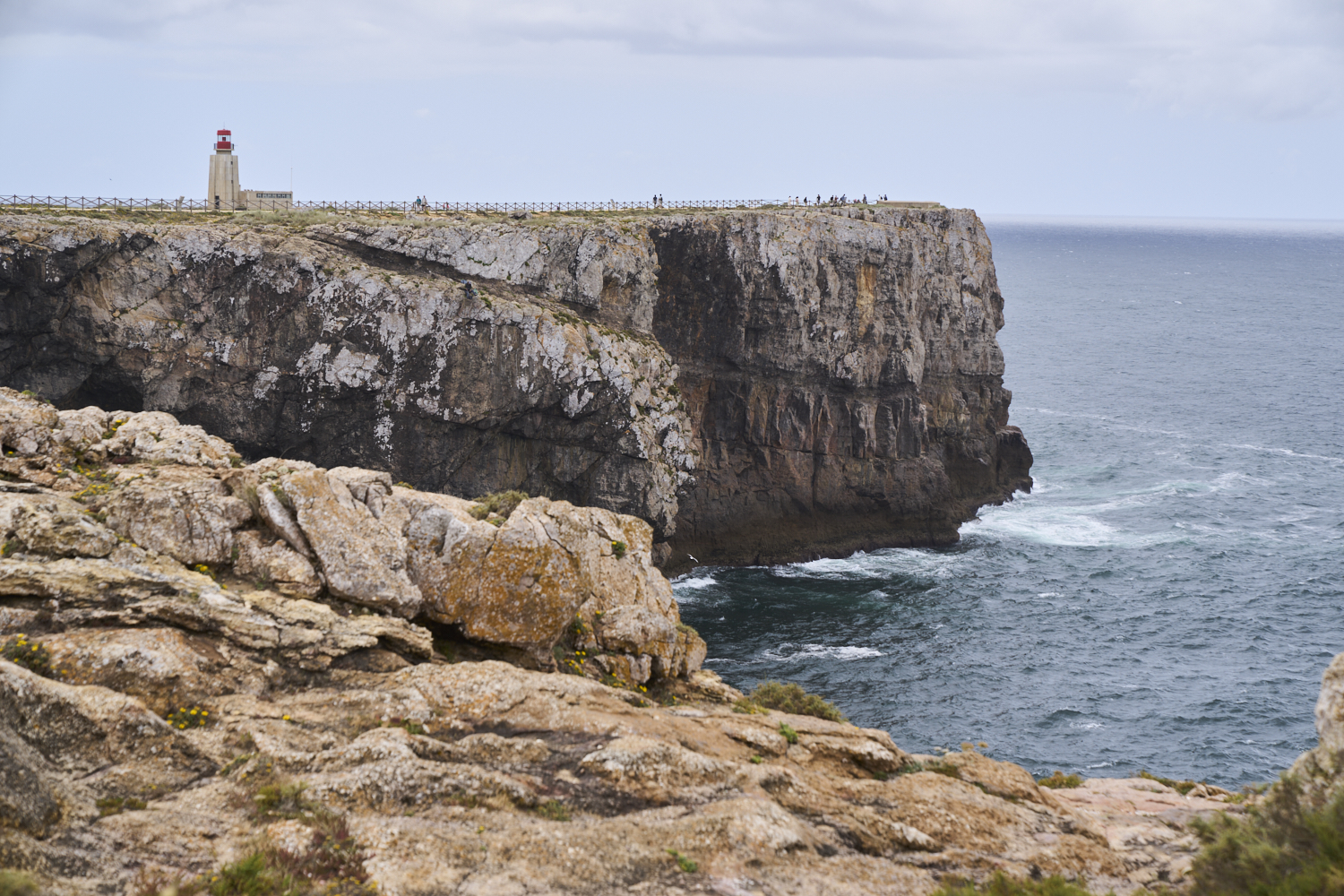
There is
a substantial hike around the perimeter of the point at Sagres
which provided great views of the tall cliffs. Note the
bedding angle on the limestone.

The
strong winds were driving lots of wave action on the cliffs.

There is
a modern lighthouse at the point, currently in use for ship
navigation.

It is
spring on the Iberian Peninsula and the flowers were
blooming. And, our noses were not liking it much.
The pollen and the dust from the high winds had us weaping and
sniffling.

From the
point looking to the southeast, we could see a large bay and
another point.

A view
of the fortifications from the point. The point is
surrounded on all sides by high cliffs.

This
"cave" was an unexpected discovery. In reality, this is a
slab of limestone that was undercut by the wave action and fell
down intact resulting in this grotto. Look carefully and
you will see a small structure with a door and a window at the
top of the talus slope.
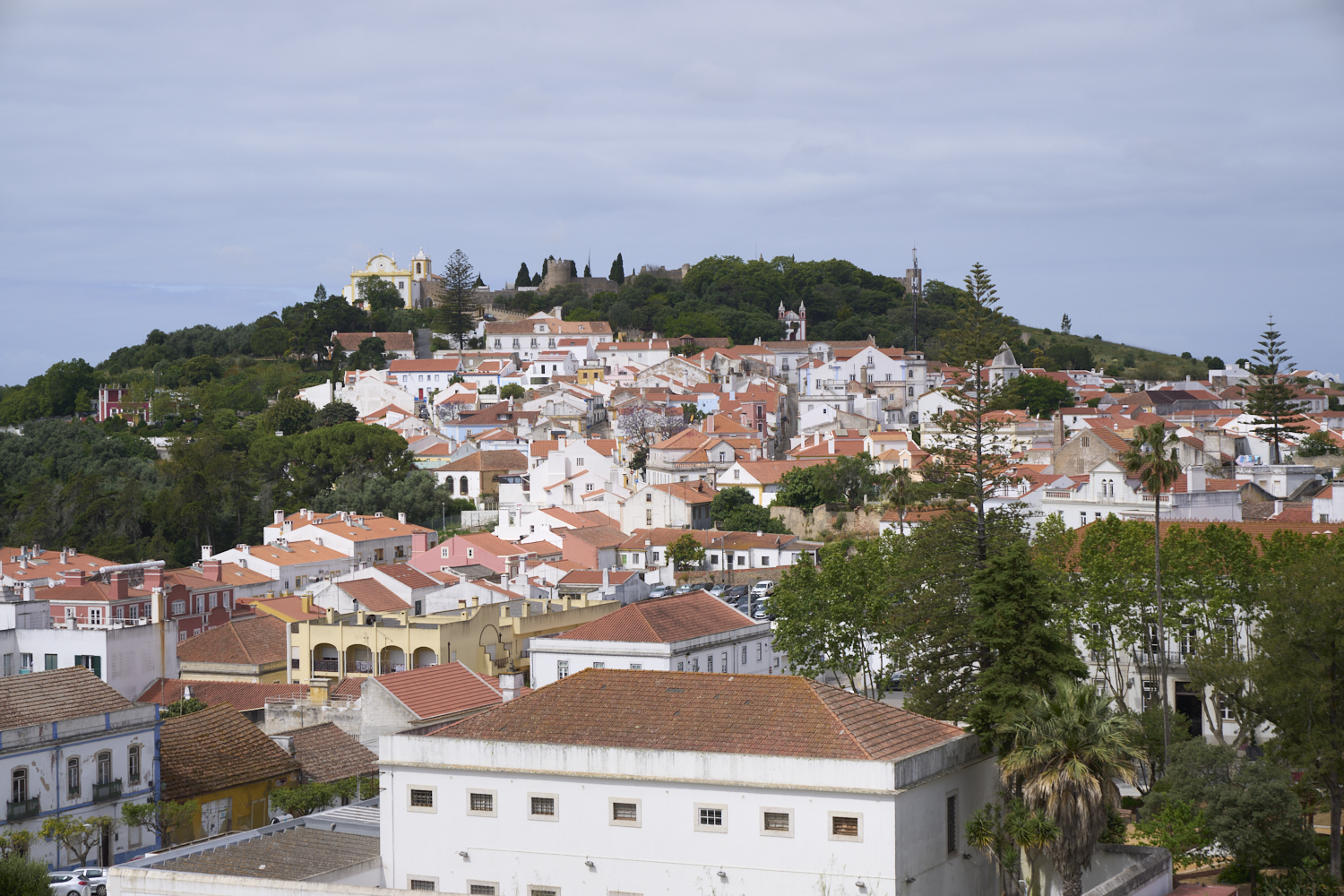
We
finished at Sagres and the wind had us running for cover.
We hopped in the rental car and headed north along the coast on
some very scenic roads. A few hours later we were at our
hotel in San Antonio outside of Sines. Our hotel was nice
and on the side of a hill that gave us great views of the
area. Look closely and you can see a church and castle
structure on the far hill.

We had
an ocean view from our outside patio. Most of the local
buildings were freshly painted in nice colors. As a side
note, there were plenty of cell towers around. We had good
4G or 5G coverage everywhere we went.

The
neighborhood near the hotel was nice.
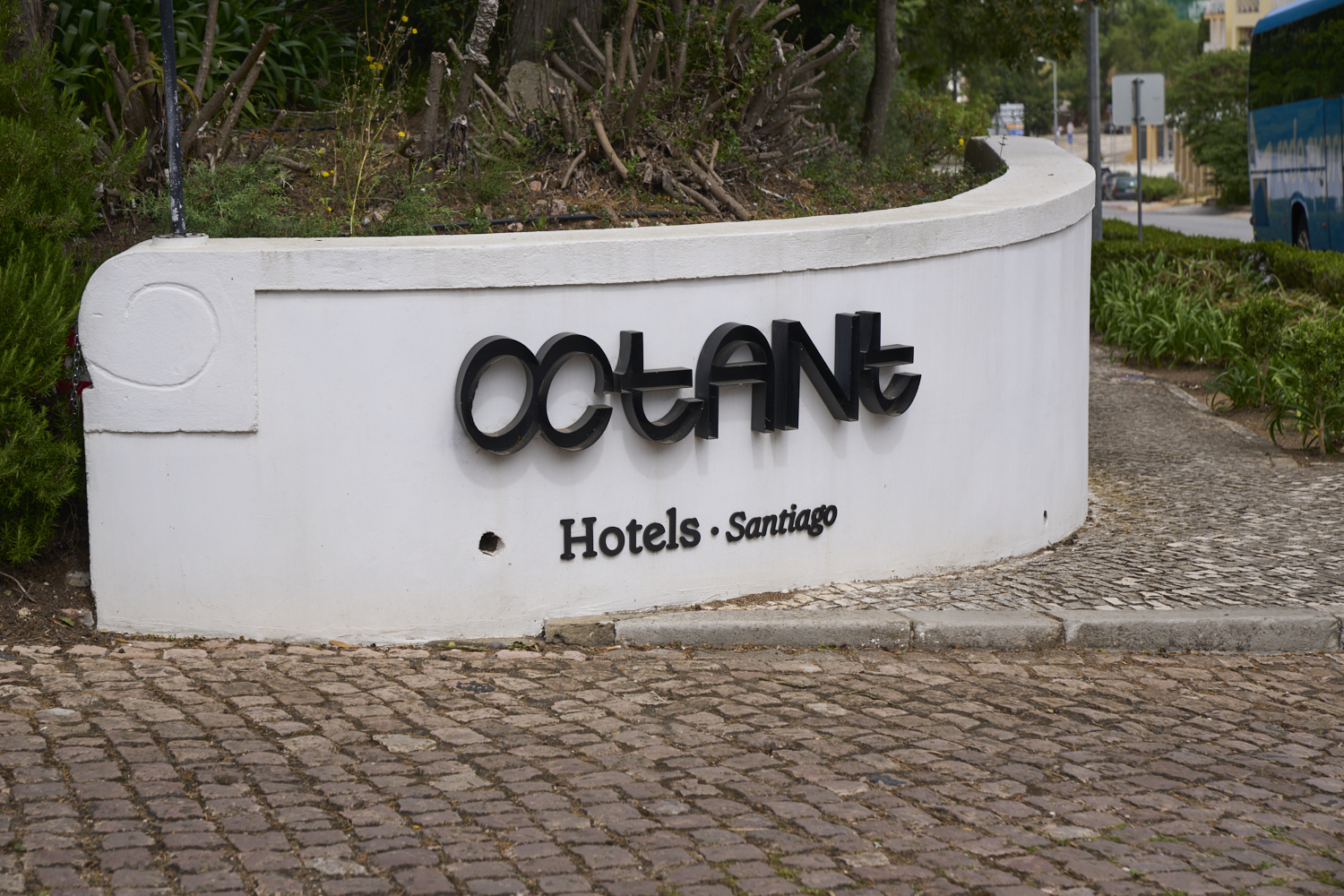
We were
pleased with the rooms and the hotel restaurant was
outstanding. Having had fish every night for a week, I
deviated and had the braised pork cheeks; they were excellent.

The
Octant had a nice pool but it was too cold for to swim.

The
building next to the hotel had some historical significance that
was unclear. But, it had been restored and looked great.
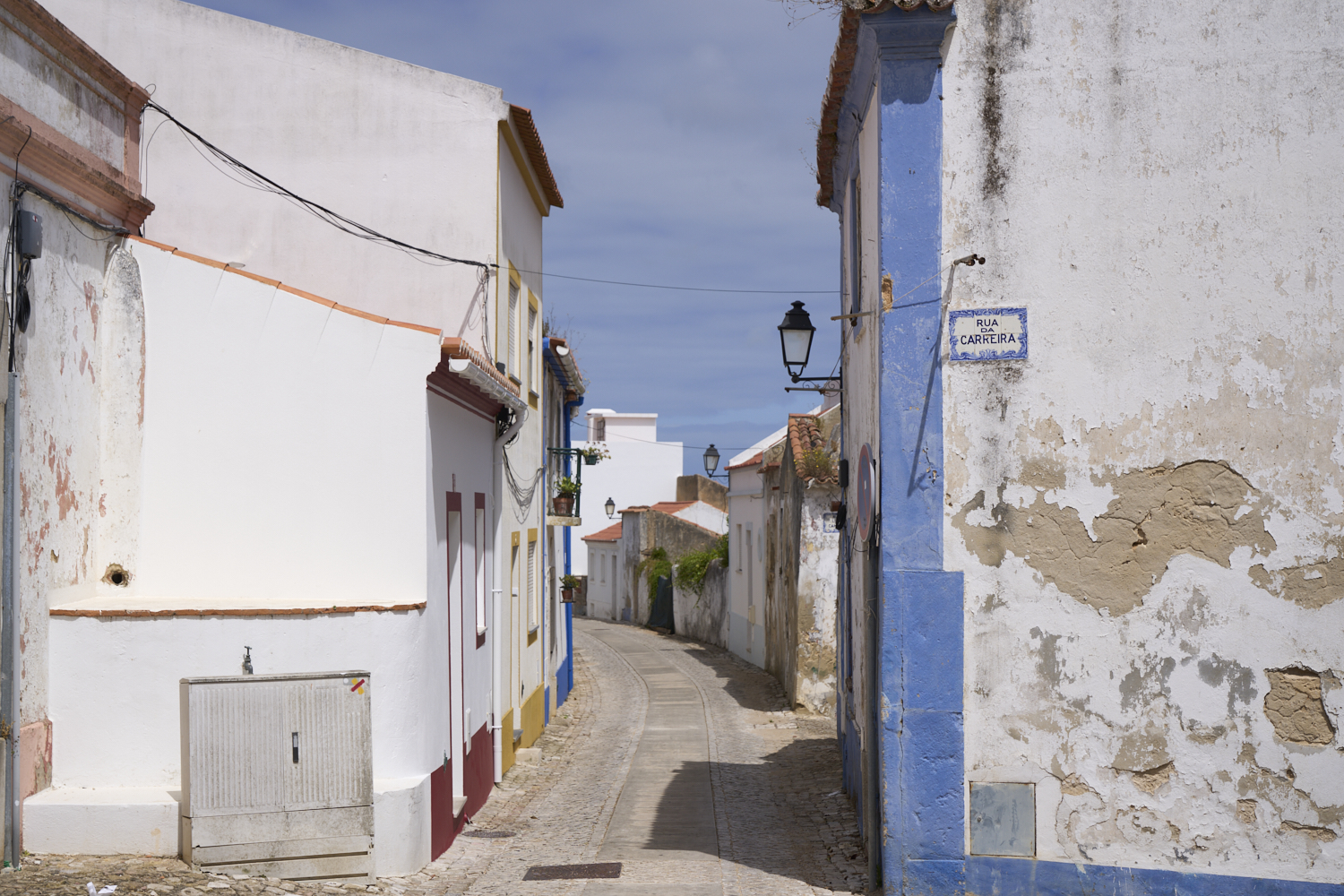
We
decided to check out the castle and got some confusing
instructions from the hotel staff. In the end, we relied
on Pocket Earth and our own intellect to get the job
done. The streets were very narrow. The passage
above is a two way street.

The
areas on the hillside were steep and all walkways were
cobblestone making walking difficult.
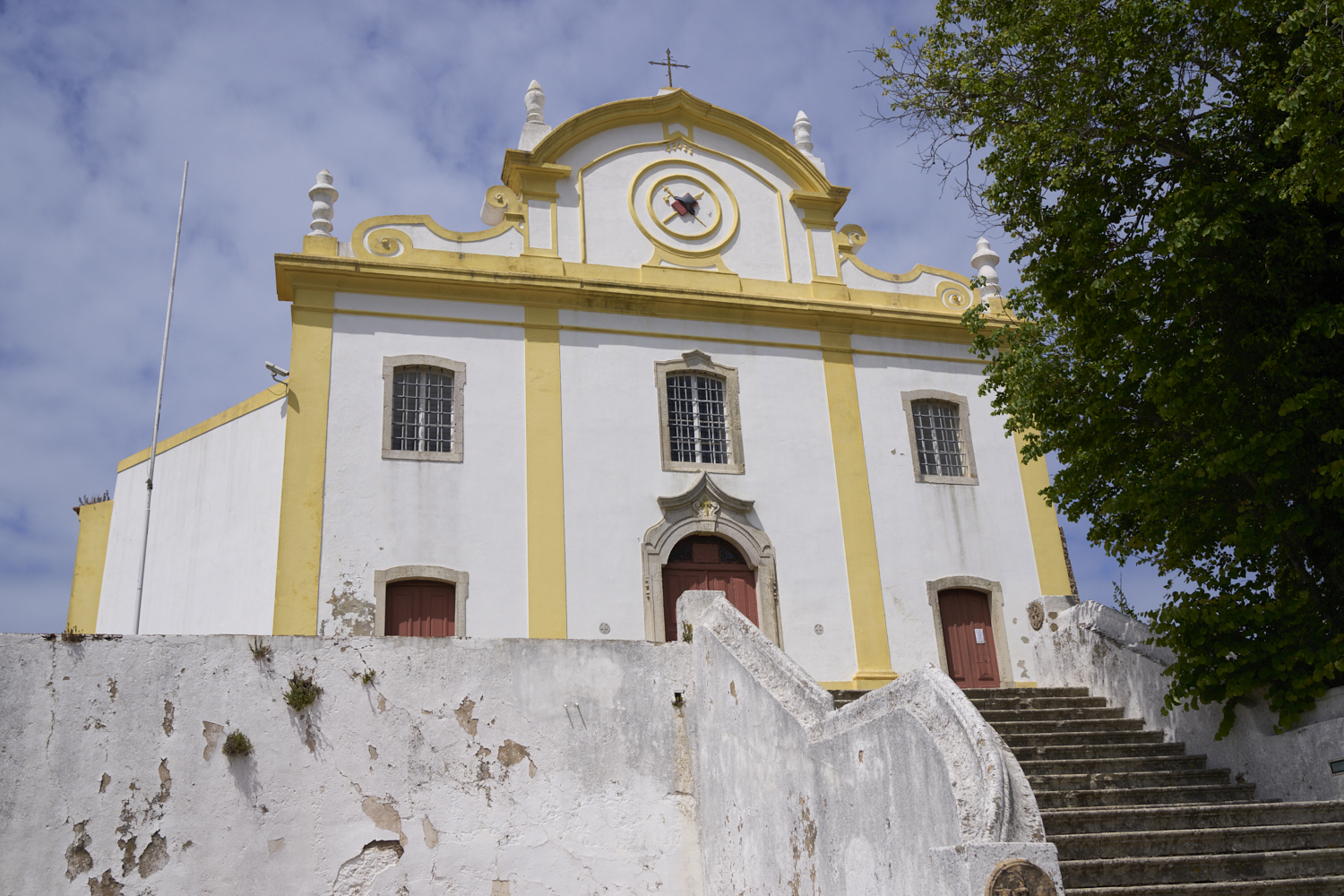
The
church at the top was rather unremarkable and was closed to
tourists. The interior of the castle grounds, as it
turns out, has been converted to a cemetery. Photos were
not allowed inside the walls.
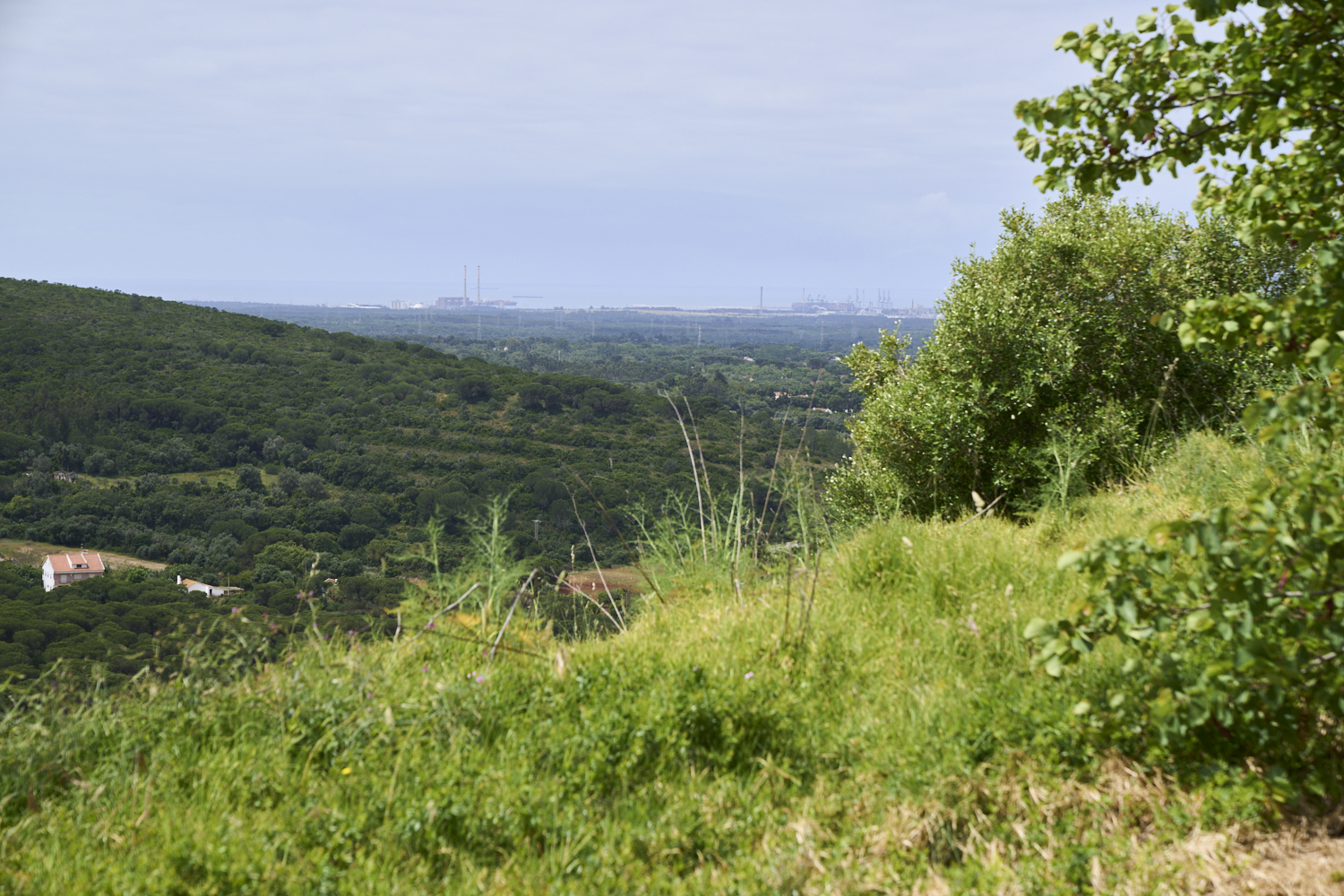
From
the castle, looking to the southwest, we could see the port
infrastructure and a power plant at Sines.
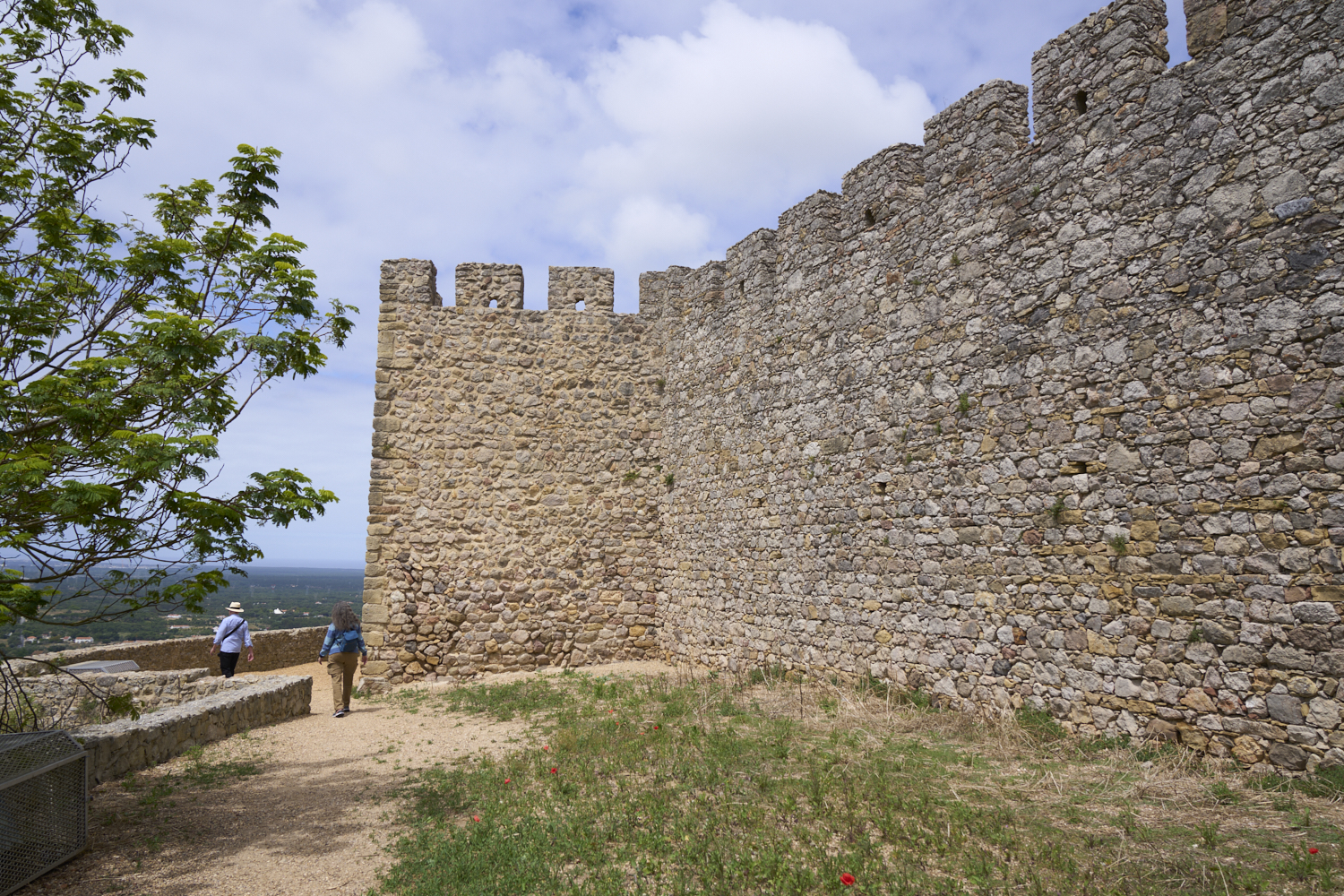
The
walls of the castle were quite robust and were in generally
good shape. Old rock walls need a lot of maintenance.
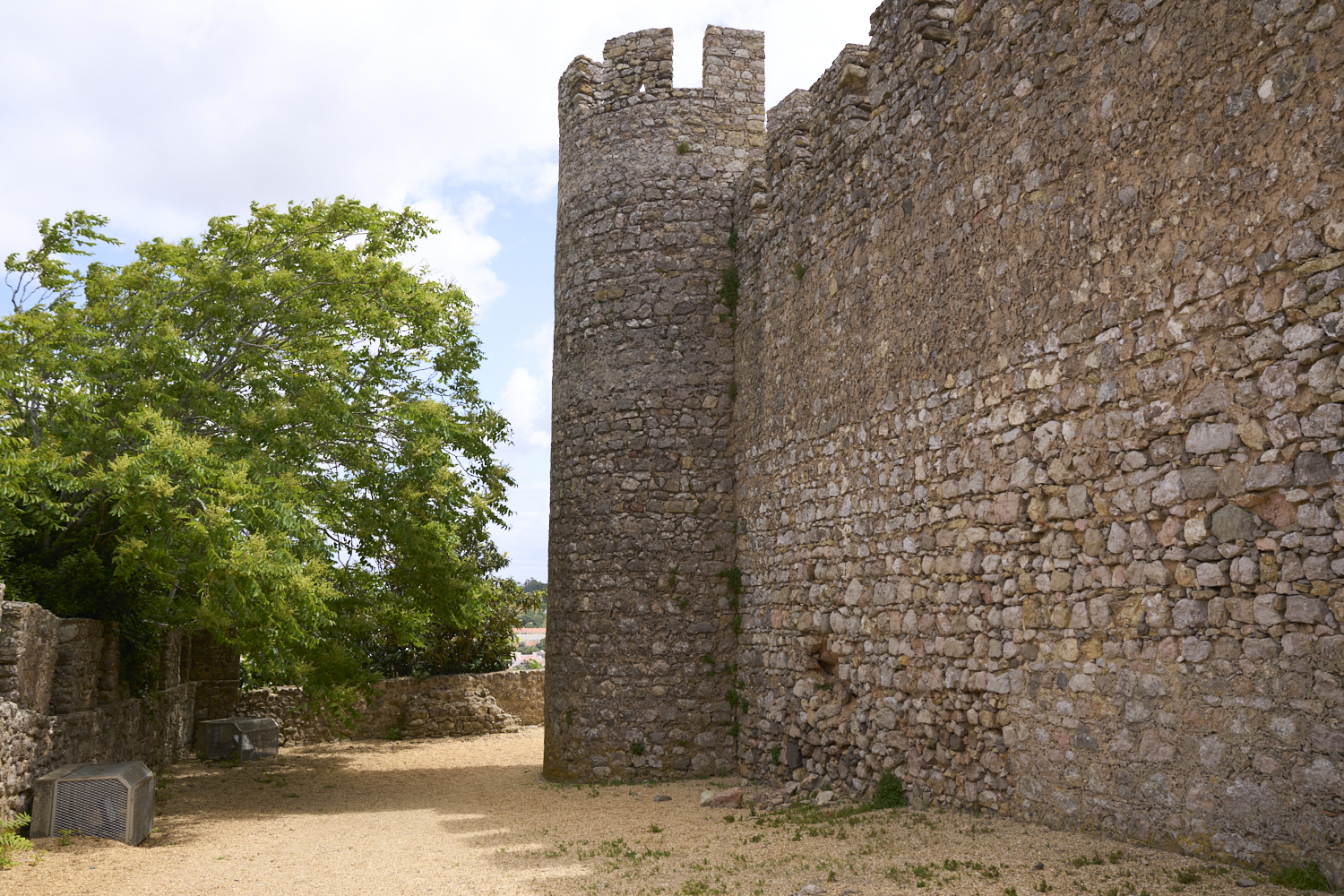
There
were tall crenelated towers on the corners. Note that
the base of the wall is starting to collapse. Weathering
takes its toll on all things.

It
is customary to have street signs on buildings and the signs
are usually custom hand-painted tile.

This
tile was seen above the entrance lintel of one of the homes on
our route.
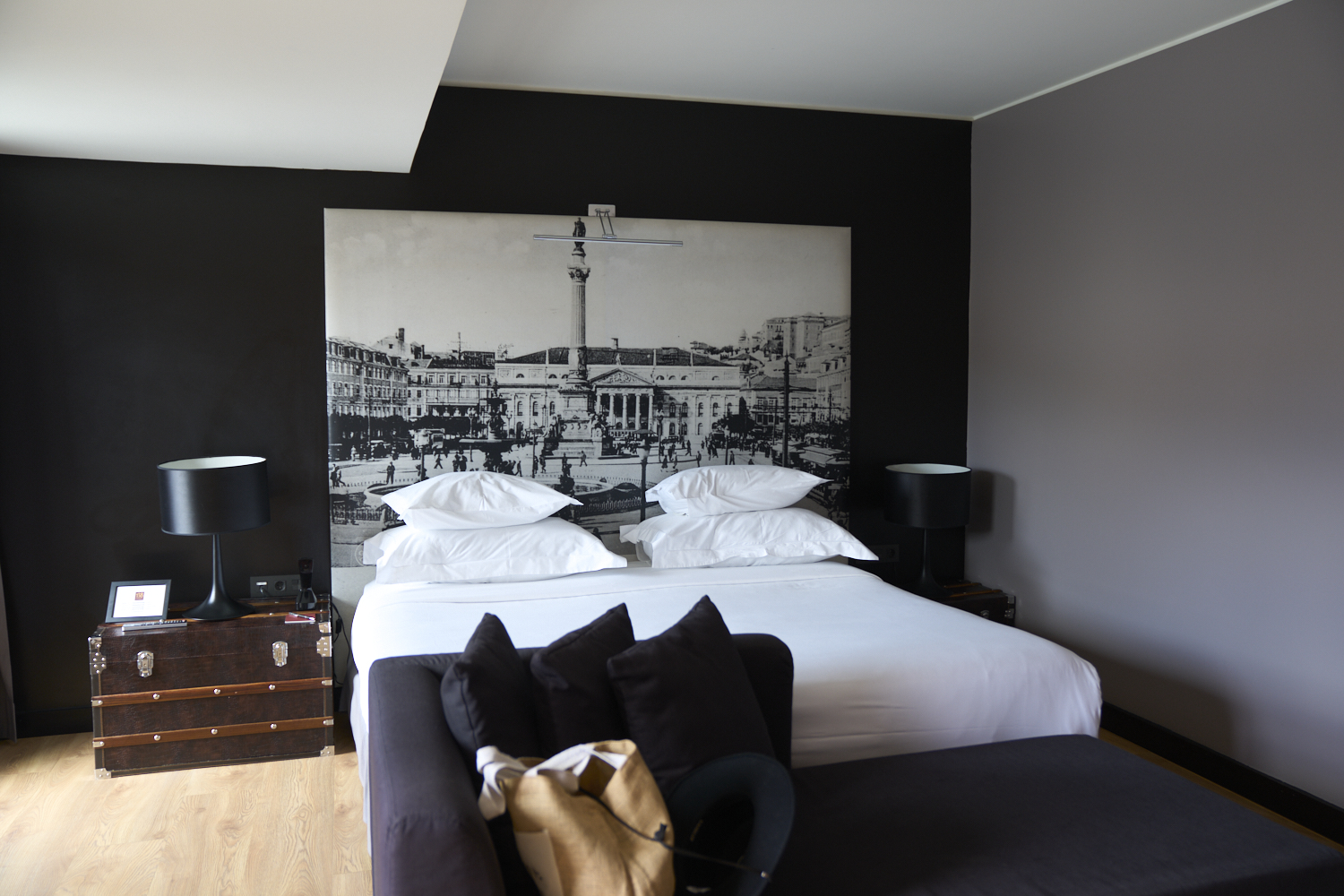
Kathleen
got us a great room at 138 Liberdade, one of
the 5-star hotels on the main plaza in Lisbon.
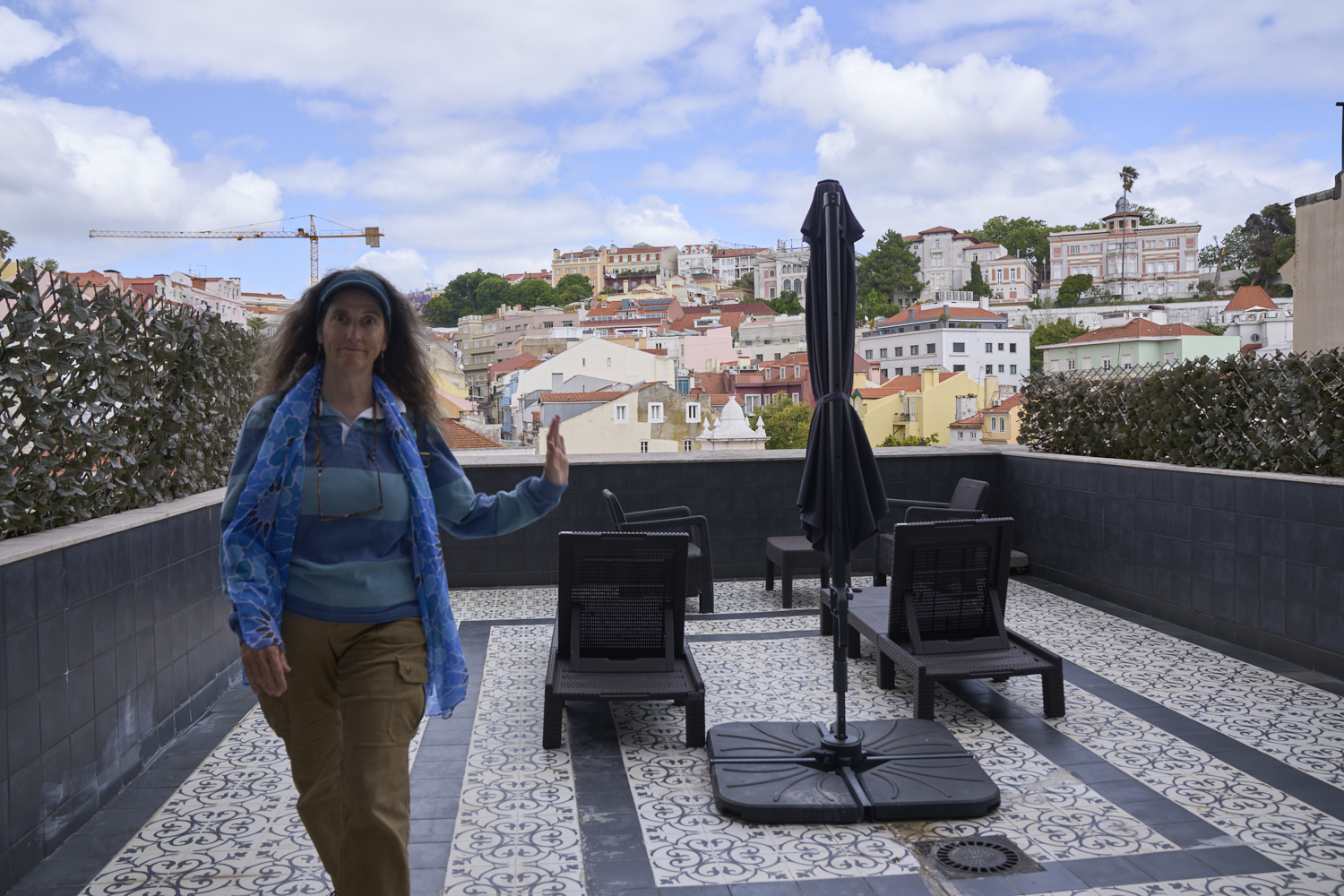
The
hilly neighborhood that surrounded our hotel was visible from
our back deck.
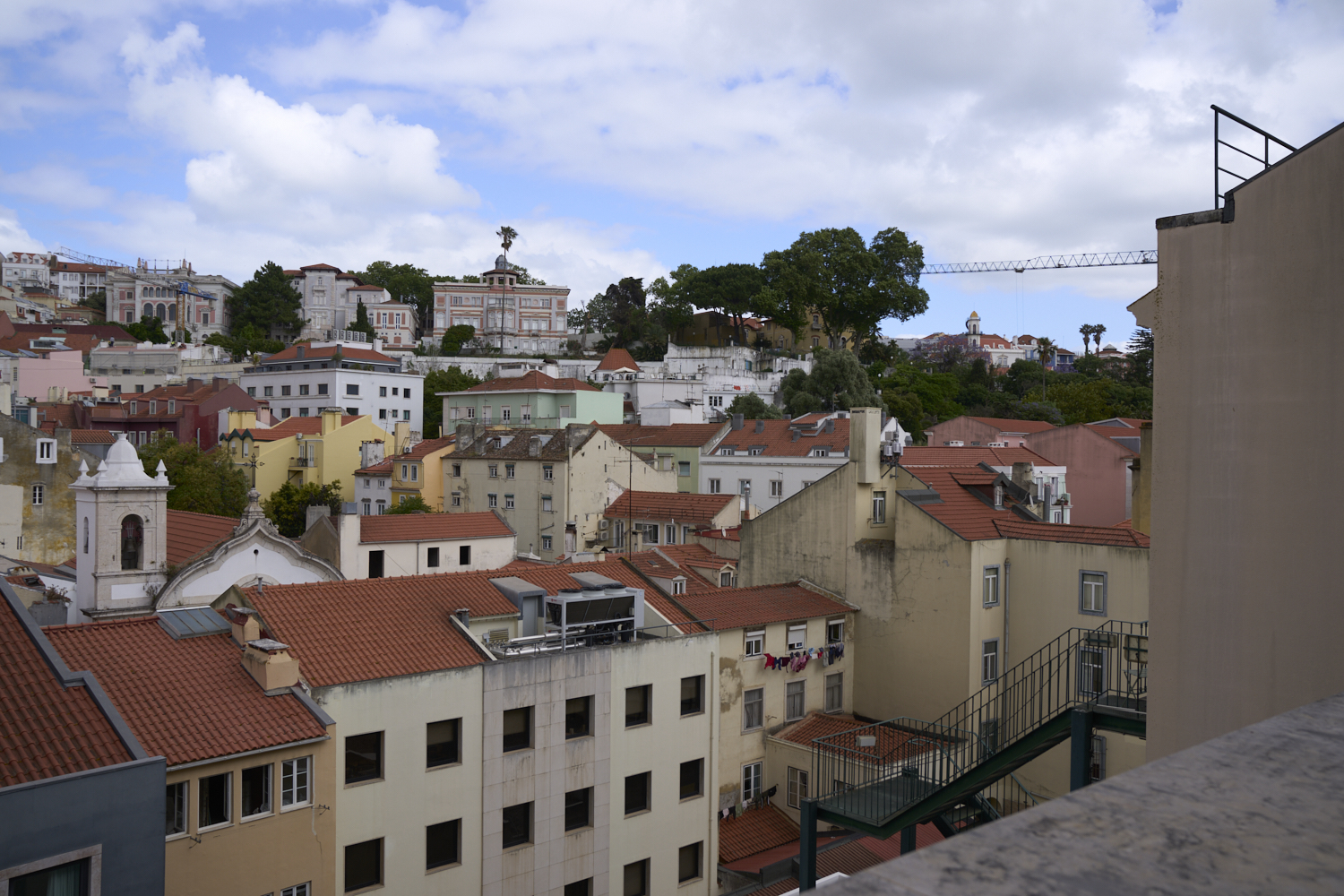
| Previous Adventure | ||
| Trip Home Page |
Photos and Text Copyright Bill Caid 2024, all rights
reserved.
For your enjoyment only, not for commercial use.